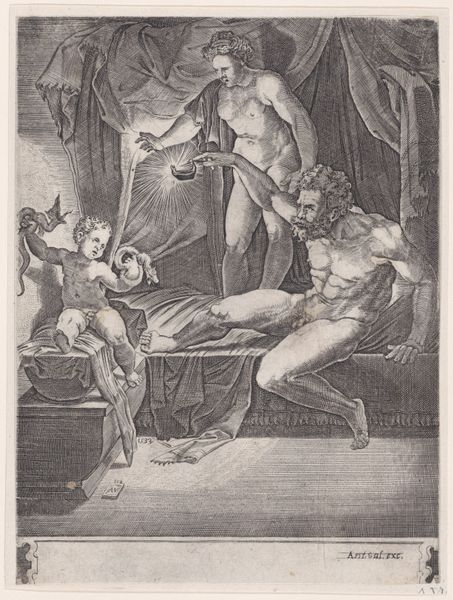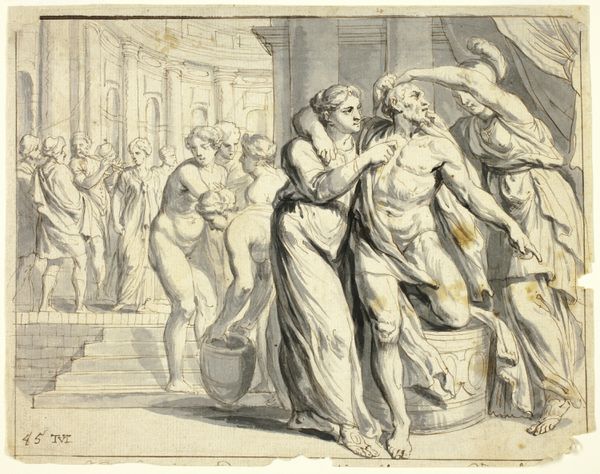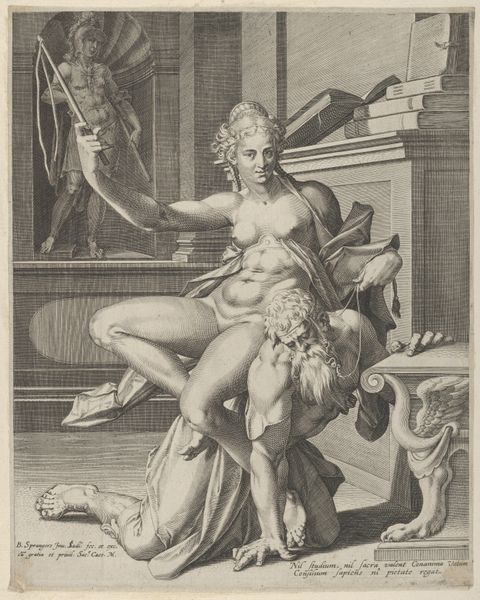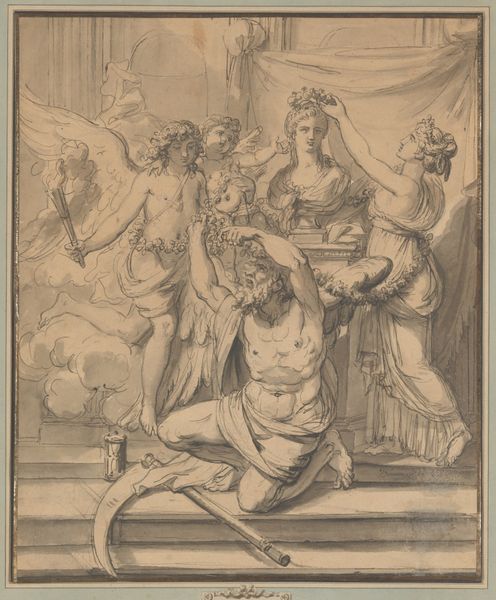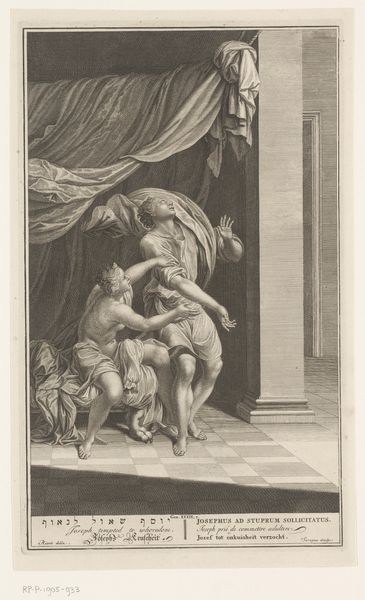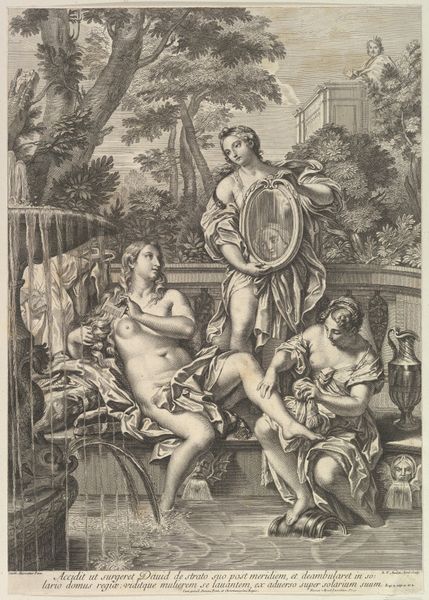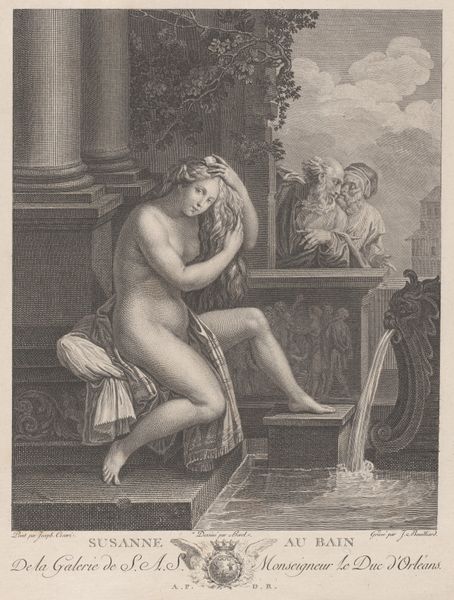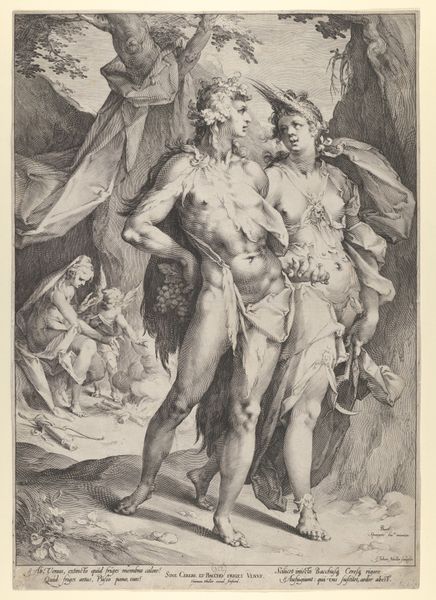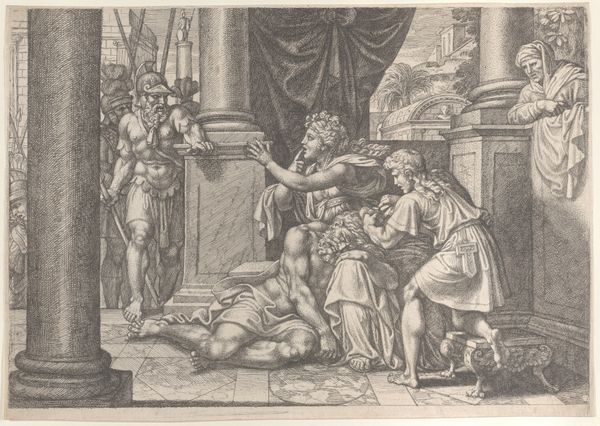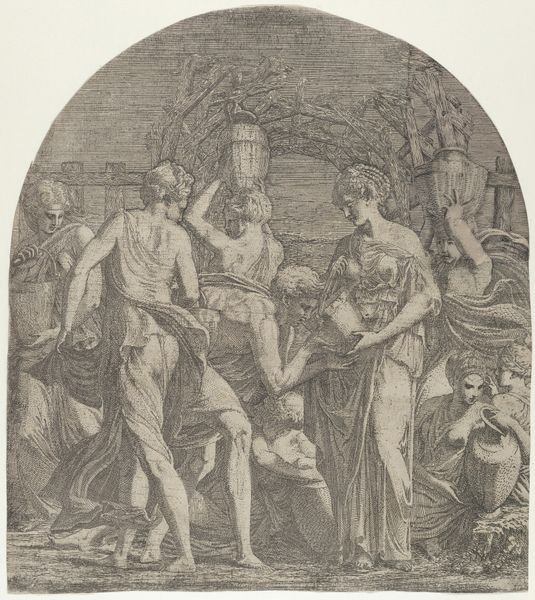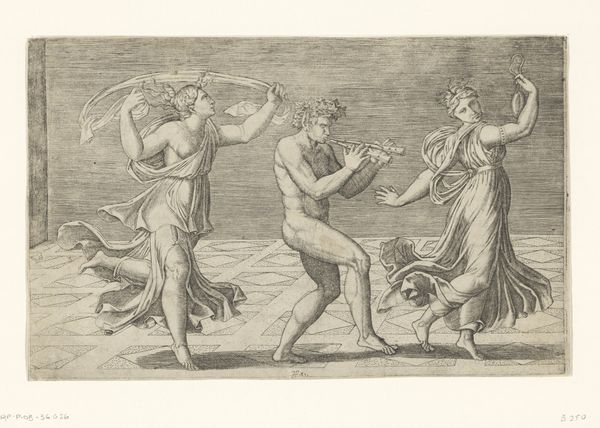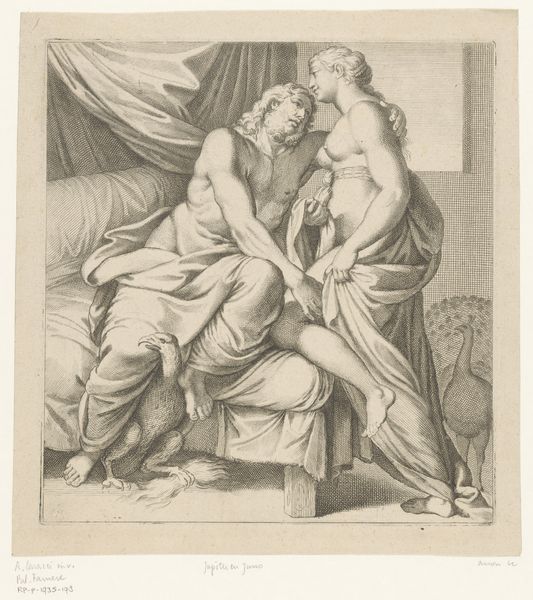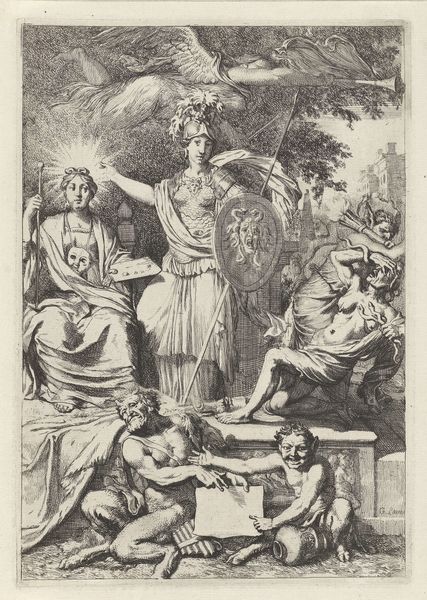
Phaedre, Having Declared Her Passion, Attempts to Kill Herself with the Sword of Hippolytus c. 1801
0:00
0:00
drawing, engraving
#
drawing
#
neoclacissism
#
narrative-art
#
classical-realism
#
figuration
#
history-painting
#
academic-art
#
engraving
Copyright: Public Domain: Artvee
Editor: Right, so we’re looking at "Phaedre, Having Declared Her Passion, Attempts to Kill Herself with the Sword of Hippolytus" by Anne-Louis Girodet, created around 1801. It's an engraving. The scene feels very dramatic, theatrical even, but I’m having trouble piecing together the narrative. What’s your read on it? Curator: Oh, drama indeed! It’s as if Girodet captured the precise moment when despair crashes into the orderly world of Neoclassicism. See Phaedre collapsing? Her world imploding after confessing forbidden love for her stepson, Hippolytus, who is recoiling there! Imagine the weight of those unrequited feelings pressing down, driving her to such extremities! The servant tries to take the sword away... Tell me, what feelings arise in you when you look at this, not as an undergrad, but just as you? Editor: It’s melodramatic, almost over-the-top, especially Hippolytus’s pose! Is he saying “Noooo!” It seems so contrary to the ideals of Neoclassicism. Is it supposed to be about the downfall when emotions reign? Curator: Absolutely. Girodet is walking a tightrope here, isn’t he? He's flirting with Romanticism, poking holes in the stoic façade of the Neoclassical style. He understands the rules, knows the assignment… and is hinting about breaking out! Editor: I see what you mean now. There is this undercurrent of raw emotion boiling up. What at first seemed hammy is almost heartbreaking. Curator: Exactly. It's that tension between restraint and outburst that gives this piece its unique flavor, wouldn't you agree? And in our lives, where can we give ourselves permission to find this middle ground? Editor: Definitely! I came expecting something strictly Neoclassical and found a conflicted story. Makes me wonder what else is hiding beneath the surface of other "orderly" art.
Comments
No comments
Be the first to comment and join the conversation on the ultimate creative platform.
